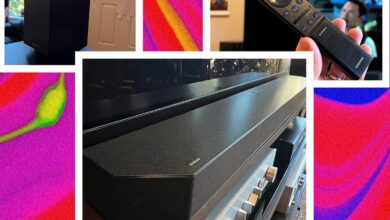NASA to make decision on Boeing Starliner’s fate
With no consensus on the safety of the Starliner spacecraft, NASA officials said Wednesday they need another week or two before deciding whether to return two astronauts to Earth on a Boeing spacecraft or extend their stay on the International Space Station until next year.
Boeing’s Starliner spacecraft, which is suspected of having a thruster malfunction and leaking helium, is taking up a valuable parking spot at the space station. It needs to leave the orbiting research complex, with or without its two-person crew, before the launch of SpaceX’s next Crew Dragon mission to the station, scheduled for September 24.
“We can sort things out and make things work if we need to expand, but that’s becoming much more difficult,” said Ken Bowersox, associate administrator for NASA’s spaceflight operations directorate. “With the consumables that we’re using, with the need to use ports for cargo missions, things like that, we’re getting to the point where we really should be making a decision by the last week of August, if not sooner.”
Last week, NASA officials said they expected to make a decision by mid-August — possibly this week — but Bowersox said Wednesday that NASA likely won’t make a final decision on what to do with the Starliner spacecraft until late next week or early the week of Aug. 26.
“We have time before we bring Starliner home and we want to use that time wisely,” said Bowersox.
NASA astronauts Butch Wilmore and Suni Williams blasted off inside Boeing’s Starliner spacecraft on June 5. Their mission was the first crewed test flight on Boeing’s spacecraft before NASA allows Starliner to conduct regular crew rotations to the space station. But after software glitches, parachute concerns, and previous issues with its propulsion system, Boeing’s Starliner program is four years behind SpaceX’s Dragon spacecraft, which first carried astronauts to the station in 2020.
And now there’s a significant chance the Starliner crew won’t return home on the spacecraft they launched on. Bowersox, a former astronaut, said NASA has brought in propulsion experts from other programs to review the propulsion issue.
Engineers are still investigating the root cause of why five of the 28 thrusters in Starliner’s reaction control system, supplied by Aerojet Rocketdyne, failed during its approach to the space station the day after launch. The thrusters overheated as they were repeatedly pulsing to fine-tune the spacecraft’s rendezvous point with the station. Ground tests of similar control thrusters showed that a Teflon seal in an internal valve could swell at higher temperatures, restricting the flow of propellant to the thrusters.
Four of the five thrusters that failed before Starliner docked to the station were restored and producing near-normal thrust levels during tests last month. But many NASA engineers are not confident the thrusters will function properly during Starliner’s journey from the space station back to Earth. These control jets are needed to keep the spacecraft pointed in the right direction as four larger rocket engines fire to ignite the orbiter to steer the capsule back into the atmosphere for landing.
The thruster’s rapid pulses, combined with firing four larger engines for extended periods of time, could raise the temperature inside the four dog-shaped thruster chambers around the perimeter of the Starliner service module. Once the orbital burn is complete, Starliner would jettison the service module to burn up in the atmosphere, and its crew module would use another thruster to guide its re-entry. It would then deploy parachutes to slow its descent, likely to White Sands, New Mexico.
Increased risk
Outside engineers brought in from other NASA centers have so far largely agreed with the assessments made by the full-time team working on Starliner, Bowersox said.
“There are a lot of people out there who have worked with similar thrusters and have seen similar issues,” he said. “So we got feedback on what we were seeing, and a lot of the feedback confirmed what we thought was causing the signatures that we were seeing in orbit. It’s really hard when you don’t have the actual hardware to look at, when it’s in space.”




